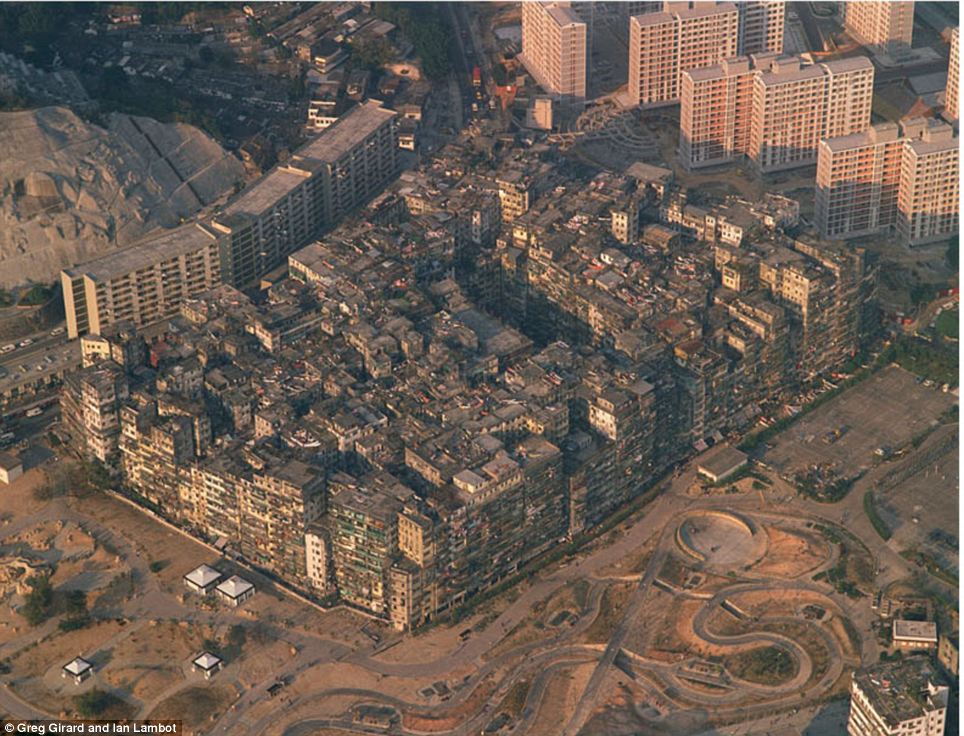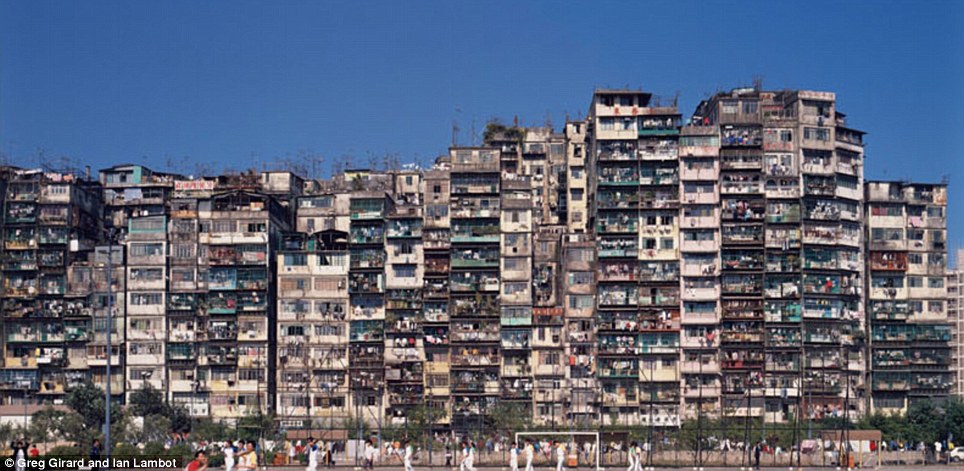Once the most densely populated space on earth, Kowloon Walled City was demolished in 1994. Originally a Chinese military fort, the walled city became a largely ungoverned district of Hong Kong when the New Territories were given to Britain in the late 19th Century. After Japanese surrender in WWII, refugees poured into the site to take advantage of Chinese protection.
After the British failed to drive squatters out of the city in 1948, they took a 'hands off approach' to the district; generally avoiding to become involved in any of its matters. As a result, it was mainly run by gangs from the 50s to the 70s. Its population was surveyed in 1987 indicating that about 33,000 people lived in the 0.026 sq km site (since estimated to have been more like 50,000). It was at this time that the Hong Kong government announced plans for its demolition. Today the area is a park.
Here is a quick run down of its population density in 1987 compared with that of a few major cities today:
- London (2013): 5,285/km2
- Singapore (2013): 7,315/km2
- New York (2013): 10,640/km2
- Kowloon Walled City (1987): 1,250,000/km2
Interestingly, as the global population continues to soar - and cities continue to sprawl - we now look back on this district and ask, 'was this anarchy, or progress?'
Perhaps China's new 'sky-cities' aren't actually as revolutionary as we thought.












